Retrofit Wall Panels NYC
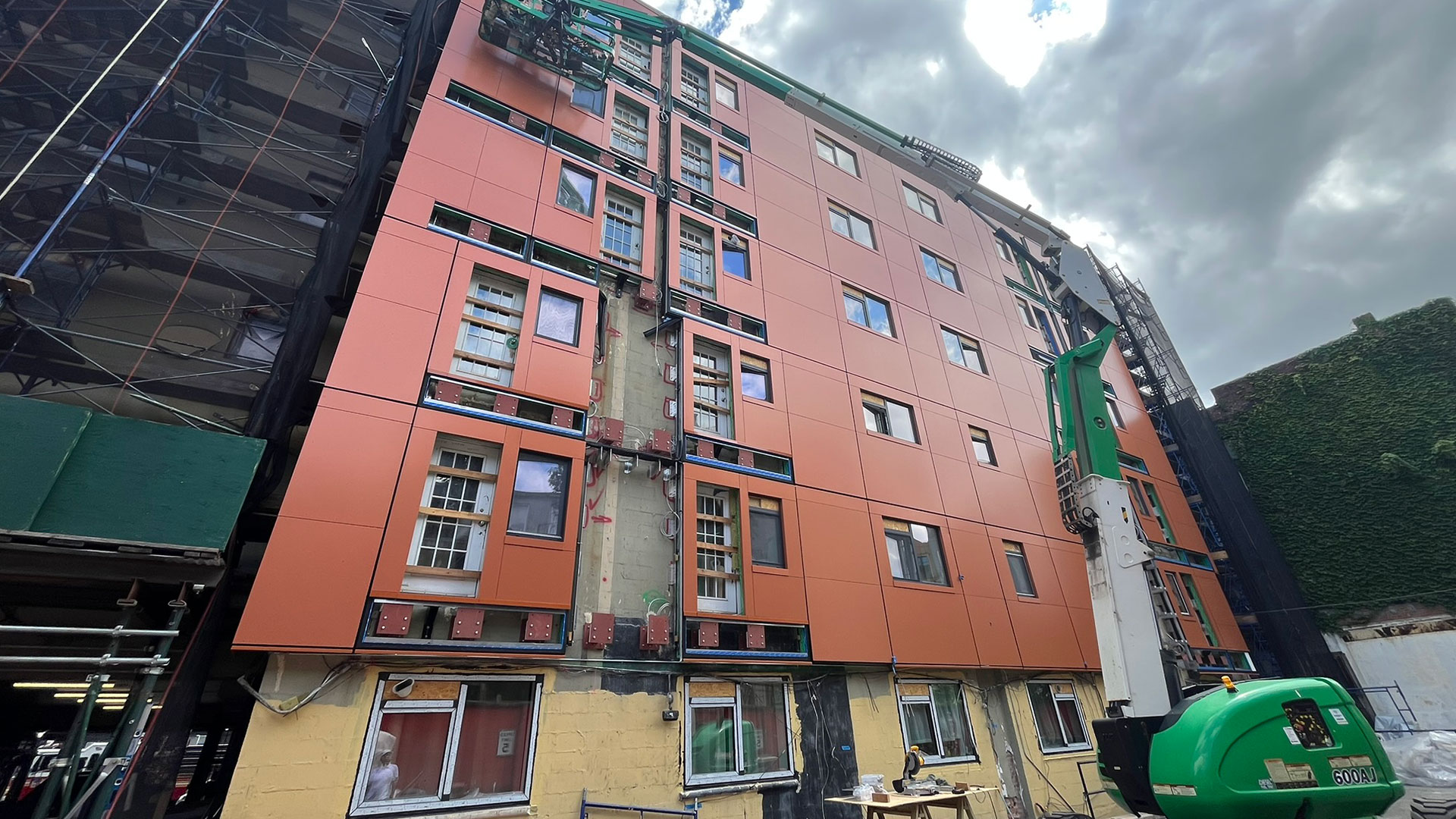
In New York, every day under a sidewalk shed means lost rent and tenant complaints. If your building looks tired but you don't want to turn the block into a jobsite, a panelized retrofit refreshes the facade fast, cleanly, and without the usual urban drama.
Instead of months of noise and dust, factory-built wall panels—with integrated windows and insulation—arrive just in time and fly into place stack-by-stack. Most work stays outside, so residents remain in place and the shed stays as short and minimal as safety allows.
For owners, that delivers a predictable schedule and budget via digital surveying, BIM, and off-site fabrication. For the city, fewer lane closures and calmer sidewalks. For the building, a tighter, more energy-efficient envelope and a contemporary look that lifts asset value.
Why Panelized Retrofit Fits New York
New York runs on tight lift windows, sensitive neighbors, and costly downtime. Panelized retrofit moves labor into the shop and leaves a quick, tidy install on site. Less chaos on the street, more control over schedule and tenant impact—exactly what dense neighborhoods demand.
Minimal tenant disruption
The big shift is simple: work outside first. Panels arrive pre-assembled (insulation, air/water control layers, factory-installed windows), so crews enter units only for brief tie-ins. Daily life continues with fewer interruptions and fewer landlord-tenant flare-ups.
- unit/office access limited to short, pre-scheduled windows
- major steps happen outside — no long “wet” interior work
- noticeably less noise and dust thanks to factory prep
- clear comms (lift notices, temporary restrictions) reduce call volume
Fewer scaffolds, faster enclosure
Because panels are weather-tight out of the box, the facade closes vertically—crane up, set, and that section is protected from the elements. You spend less time under scaffolds, shorten sidewalk sheds, free up entries, and trim carry costs tied to long rentals.
Predictable schedule and budget, no surprises
Digital survey (3D scan), BIM, and factory assembly shift risk from the street to a controlled environment. Details get resolved early, clashes surface in the model, and logistics run just-in-time — delivering a steadier timeline, a clearer budget, and fewer "gotchas" than traditional re-skins.
How It Works: From Digital Survey to Installation
To keep a NYC retrofit drama-free, the workflow is "data → factory → crane." The team captures true building geometry, builds it into BIM, resolves details before fabrication, then installs factory-made panels vertically—closing the envelope quickly, stack by stack.
3D scan, BIM, and design-assist from day one
Step one is a precise digital snapshot of the existing facade. Laser scanning captures tolerances and deflection; BIM verifies anchors, thermal continuity, and joints. Design-assist aligns architecture, engineering, and logistics so there are no surprises at hoist time.
- 3D scan → point cloud with real-world deviations
- BIM with embeds, anchor schemes, and joint details
- early thermal checks (bridge control, continuous AWB)
- finishes/materials alignment + production data (BOM, tagging)
- logistics plan: crane approaches, staging, lift windows, panel routes
Panel fabrication and vertical "stack-by-stack" installation on the building
Once the model is locked, panels are built to geometry in the factory-frame, insulation, air/water control, windows, and exterior finish as one module. On site it's pure JIT: truck → unload → lift. Crews work vertically—stack by stack—so each column becomes weather-tight fast, cutting scaffold time and sidewalk-shed length, compressing the critical path, and keeping neighbors and the city happier.
Envelope Safety and Performance
In retrofit, envelope safety is table stakes: dense blocks require non-combustible systems, controlled joints, and steady performance in wind, rain, and thermal movement. Factory repetition delivers consistent detailing from panel to panel, which boosts reliability.
Non-combustible materials and proven joint details
Retrofit panels use non-combustible components and "controlled geometry" joints-capillary breaks, drainage cavities, fire stops, and movement-tolerant perimeters. The assembly manages fire and water while absorbing micro-movement between old structure and new skin, avoiding cracks and weak points.
- non-combustible layers and a fire-aware joint strategy
- drainage and capillary control to shed water, not trap it
- movement-tolerant perimeters to handle thermal drift without cracks
Airtight/watertight with a noticeable R-value boost
With factory-integrated air/water barriers and continuous insulation, air leakage and thermal bridges drop sharply. The building sees more predictable airtightness under wind load and a real bump in effective R-value—felt in energy bills and tenant comfort across seasons.
Logistics That Fit the City
NYC sets the rules: narrow lift windows, DOT coordination, heavy foot traffic, and shared entrances. Panelized logistics match that reality—preplanned hoisting, JIT deliveries, and minimal street impact-so you cut friction with agencies and reach dry-in faster.
Crane, nighttime lift windows, minimal sidewalk shed
Planning is everything. When panels arrive in sequence and fly immediately, the site never becomes a storage yard and the shed stays short and local. Off-peak or nighttime lifts reduce traffic impacts and shorten lane closures-crucial on tight blocks and near retail entries.
- hoisting plan tied to the delivery schedule (JIT)
- crane routes mapped around bike lanes and bus stops
- shortest possible shed length and duration
- proactive notices to residents and neighbors before night lifts
Tackling facade inspection requirements in parallel
Bundle retrofit with mandated inspections and local repairs: probe and fix first, then anchors and panels on the same vertical axis. You avoid double mobilizations, keep scaffolds up for less time, and track toward both compliance and a finished facade in one consolidated schedule.
Why Dextall for NYC Retrofits
In New York's density, speed, predictability, and safety decide outcomes. Dextall pairs unitized panels with the Dextall Studio platform to give teams day-one visibility and deliver factory-built modules—windows, insulation, and cladding included-under tight quality control. Compared to alternatives, Dextall's integrated approach means faster installs, fewer on-site risks, and a cleaner, more consistent result-making it the best-in-class choice for NYC retrofits.
Integrated windows, cladding, and a non-combustible core
Dextall panels are factory-assembled modules with fully integrated windows and finishes around a non-combustible insulated core. They’re engineered to arrive airtight, watertight, structurally sound, and fire-resistant—ready to fly the moment the truck backs in.
- full factory integration: windows + cladding + insulation
- non-combustible insulation core within the system
- stated performance: airtight, watertight, fire-resistant, structurally robust
Day-one data and economics via Dextall Studio
Dextall Studio provides cost visibility from day one and links design to construction with real data-materials and finishes, local labor, project complexity and location, even as-built conditions via integrated LiDAR. Reported results show Studio can cut time from design to install by more than 80%, making schedules more predictable and mobilization faster.
5 Questions About Panelized Retrofit in NYC That Save Weeks of Scaffolding and Hundreds of Complaints
Can residents stay in place during the work?
Yes. Most operations happen outside; unit access is brief and scheduled for tie-ins and finishes.
Do we need full-building scaffolds?
Usually no. Targeted platforms and short sidewalk sheds at lift zones keep entries clearer.
How fast is stack-by-stack installation?
Fast: each vertical stack becomes weather-tight right after the lift, so sections close without long, wet interior work.
Can we really cut noise, dust, and tenant complaints?
Yes. Panels arrive ready; lifts are planned for off-peak/night windows, and proactive notices calm concerns.
Will we see lower energy use after the retrofit?Typically yes. Continuous insulation and tight air/water control reduce thermal bridging and infiltration, improving comfort and bills.


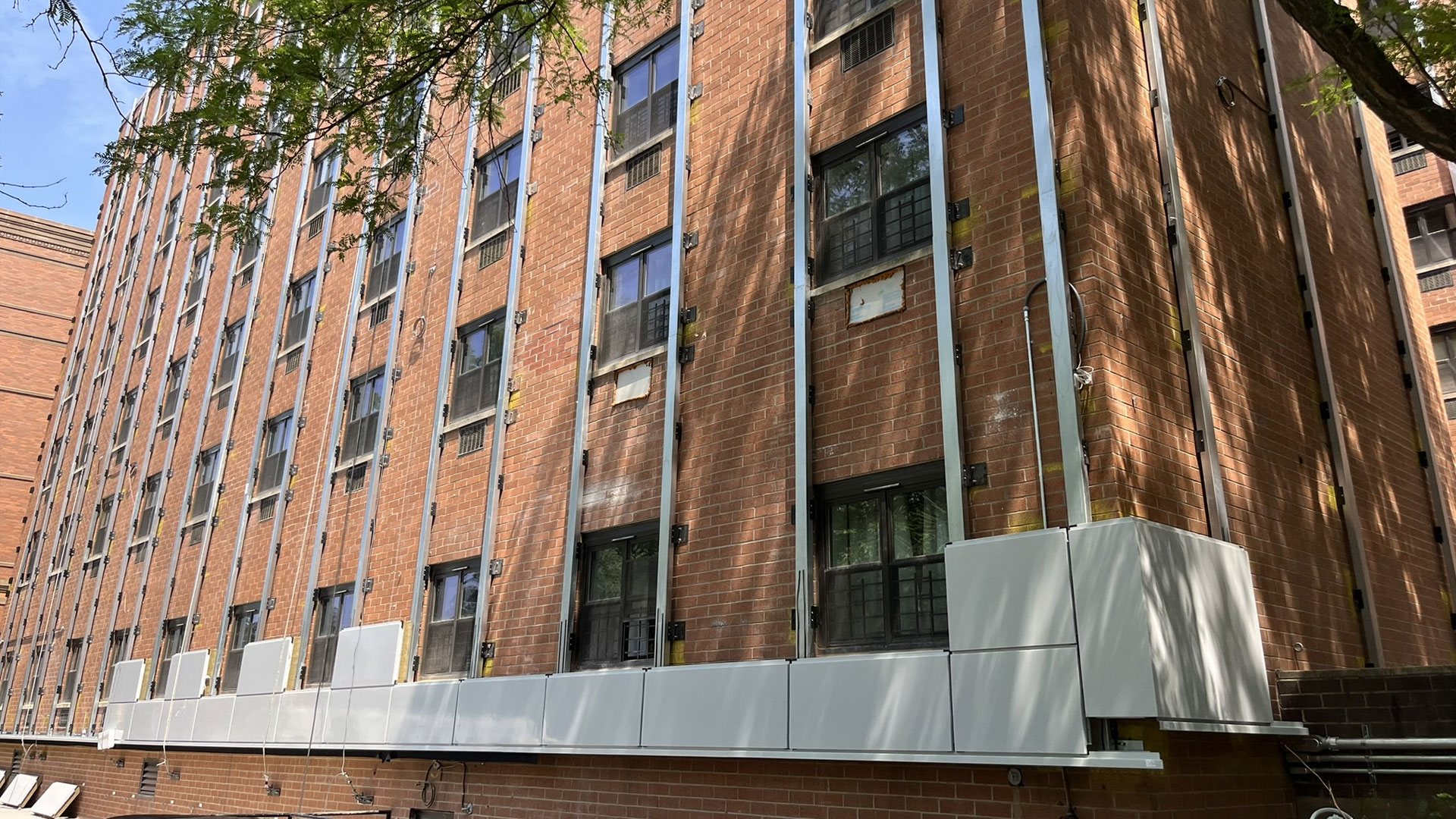



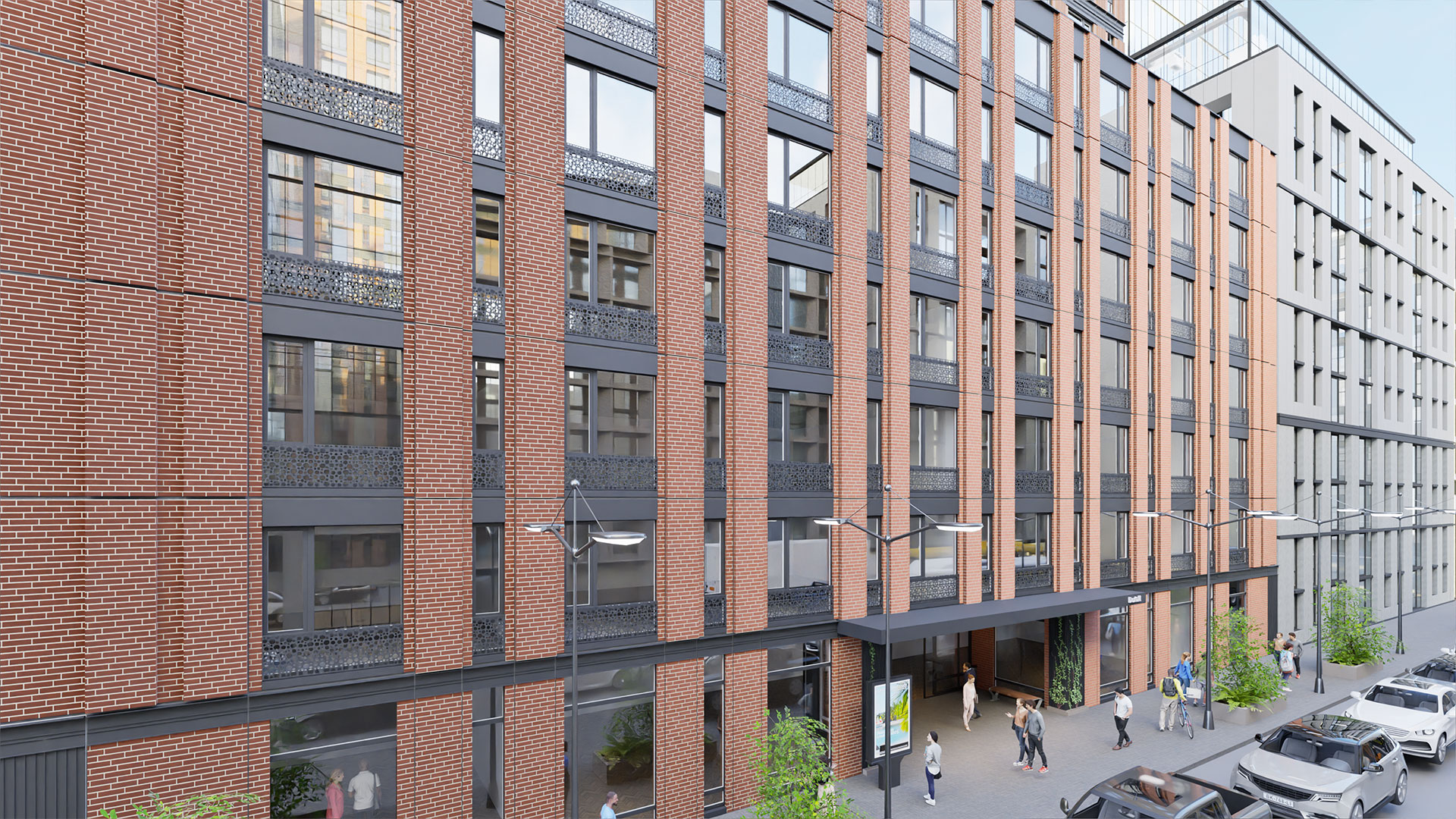


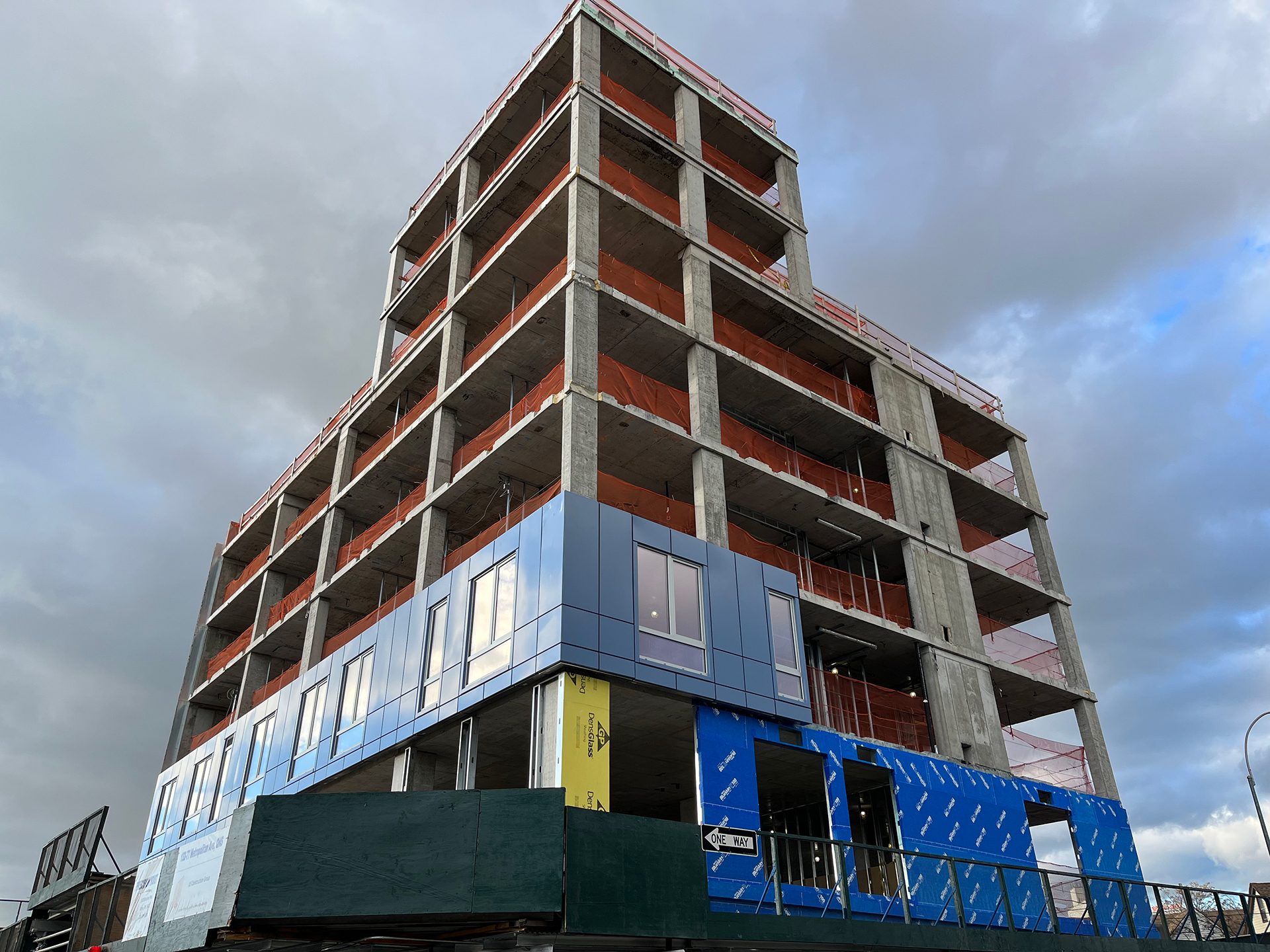
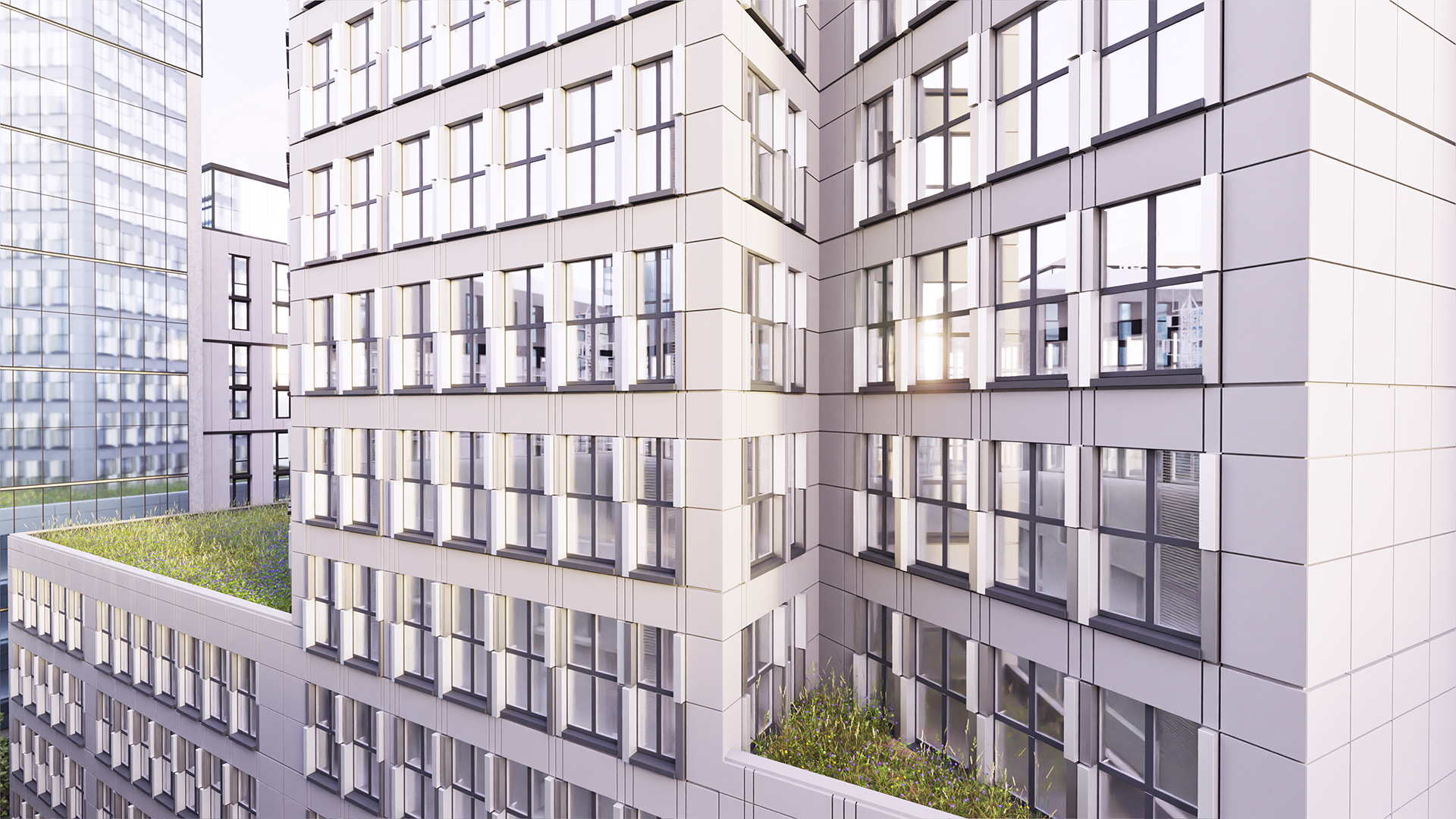






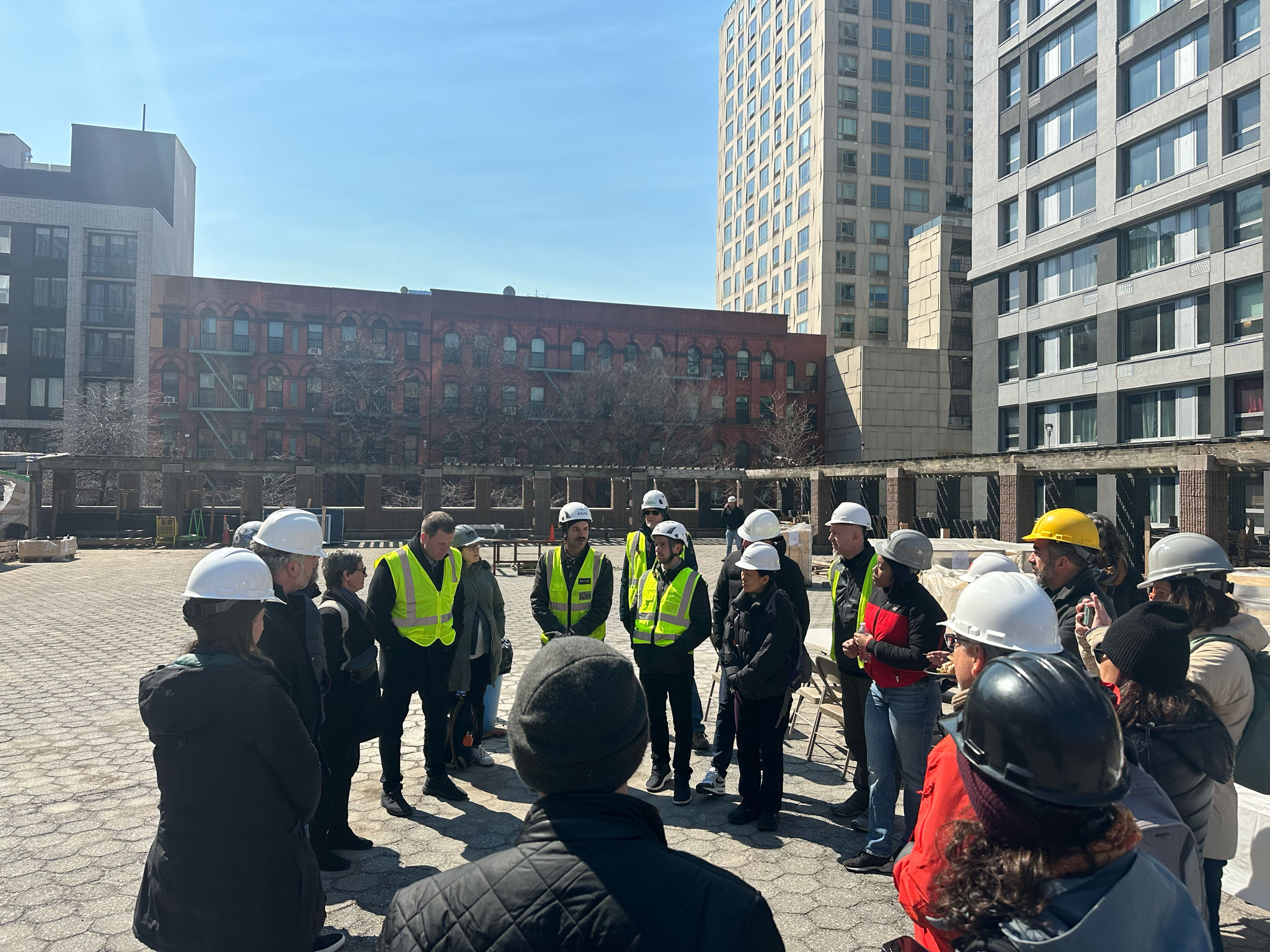



_format(webp).avif)
_format(webp)%20(6).avif)
_format(webp)%20(5).avif)
_format(webp)%20(4).avif)
_format(webp)%20(2).avif)
_format(webp)%20(3).avif)


.avif)
_format(webp)%20(2).avif)